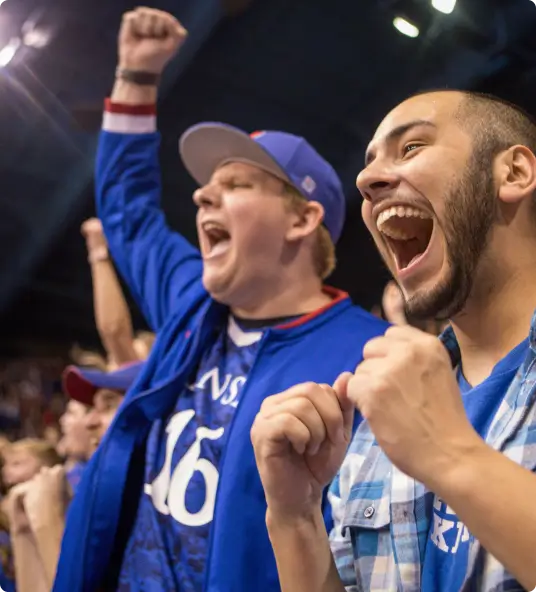There is something special about traveling to a place that you do not have much first-hand knowledge about. It’s even more remarkable that you could experience this with a group of 12 fellow Jayhawks! That was me before my journey to the Galapagos Islands. Before my departure, I knew little about the islands outside of what a few people had told me or the information I read online. Those who had been there before said the wildlife is truly remarkable and that photos simply do not do it justice. And they were right.
Before we flew out to the Islands, we spent a day and a half in Quito, the capital city of Ecuador. I had no knowledge of Quito before arriving, but I quickly learned about its rich history in the short time we spent in the city. Sitting at just over 9,000 feet, Quito is one of the highest capital cities in the world and is home to 2.8 million people. Due to the elevation and location close to the equator, the weather is fairly constant year-round with highs in the low 70’s and lows in the 50’s. It was a perfect getaway from the cold January weather in Kansas.
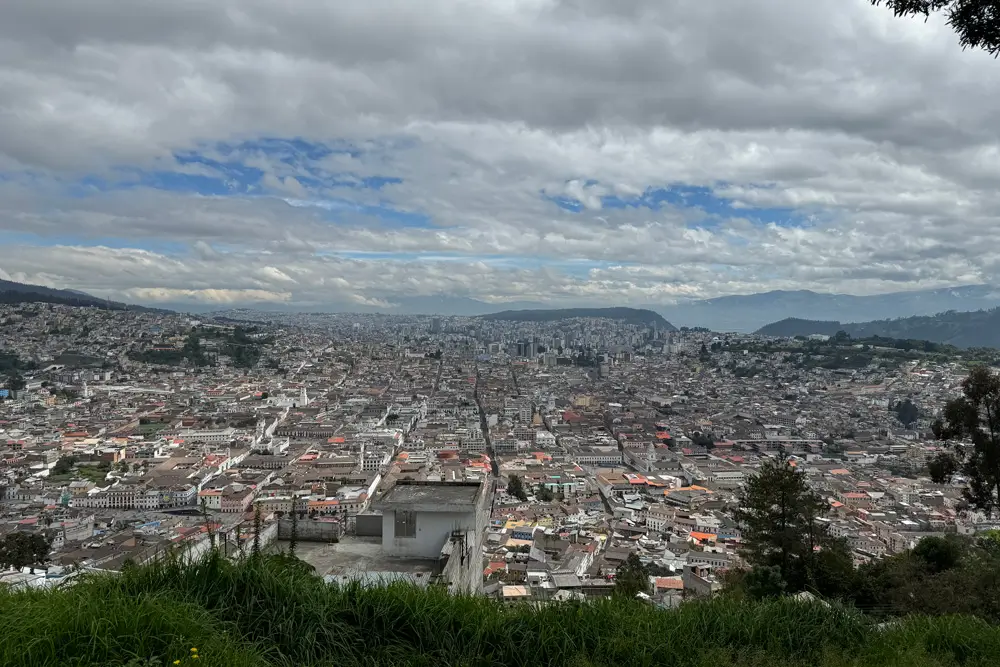
We spent our day in Quito visiting local shops and markets and learning how their families started the various businesses. My favorite stop was at a local chocolatier, Indemini Báez Chocolate. It was here that we learned about the process of turning a cocoa bean into chocolate. This was a very insightful and delicious presentation where they made truffles in front of our eyes. During the short time we were in Quito, we stayed at the Casa Gangotena, a 5-star hotel located in the heart of Quito’s historical district.
The following morning, we transferred to the airport to catch our flight to the Galapagos Islands. Upon landing in Baltra, one of the larger islands, the wildlife welcomed us, as there were land iguanas everywhere. They were a beautiful yellow and orange color and allowed us to get close to take photos.
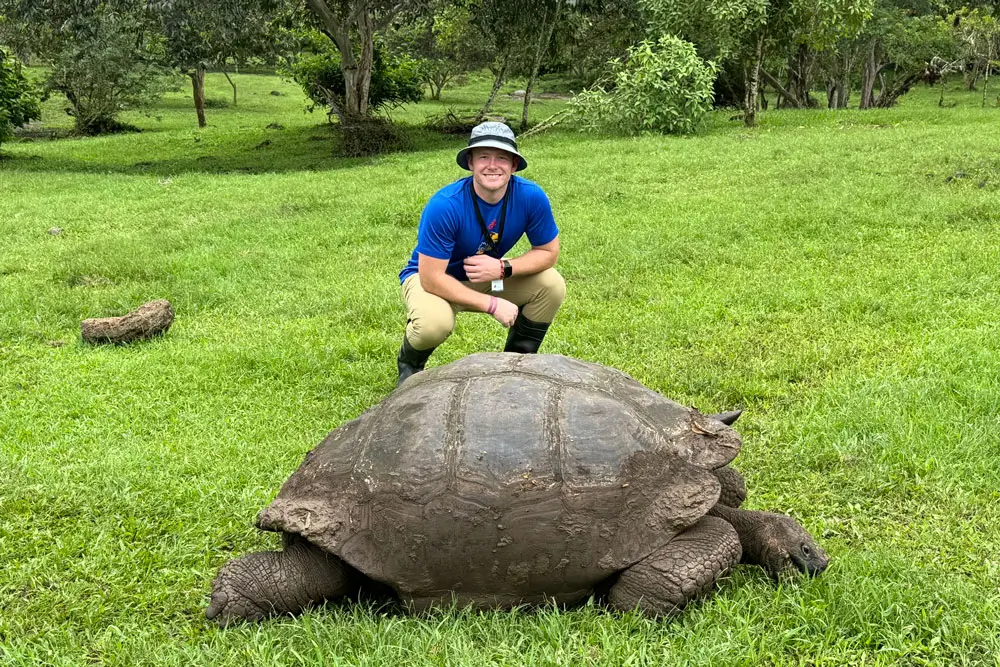
Santiago Island & the Chinese Hat Islet
The stop on Santiago Island offered the most wildlife. It was here we were able to see the Blue-Footed Booby (my personal favorite), the Galapagos Hawk, Sea Lions, Marine Iguanas, as well as hundreds upon hundreds of Sally Lightfoot crabs which have a very beautiful red, orange and yellow color to them. As we snorkeled around the Chinese Hat Islet in the afternoon, we saw penguins (!), white-tip reef sharks, sting rays, eels and a variety of fish.
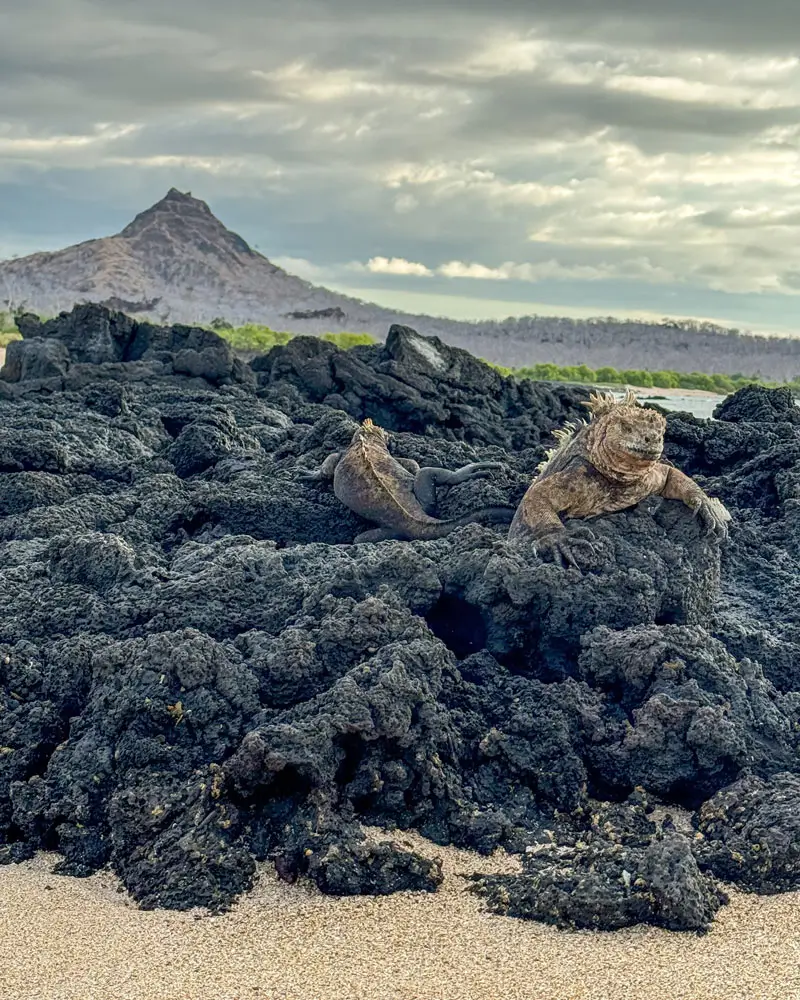
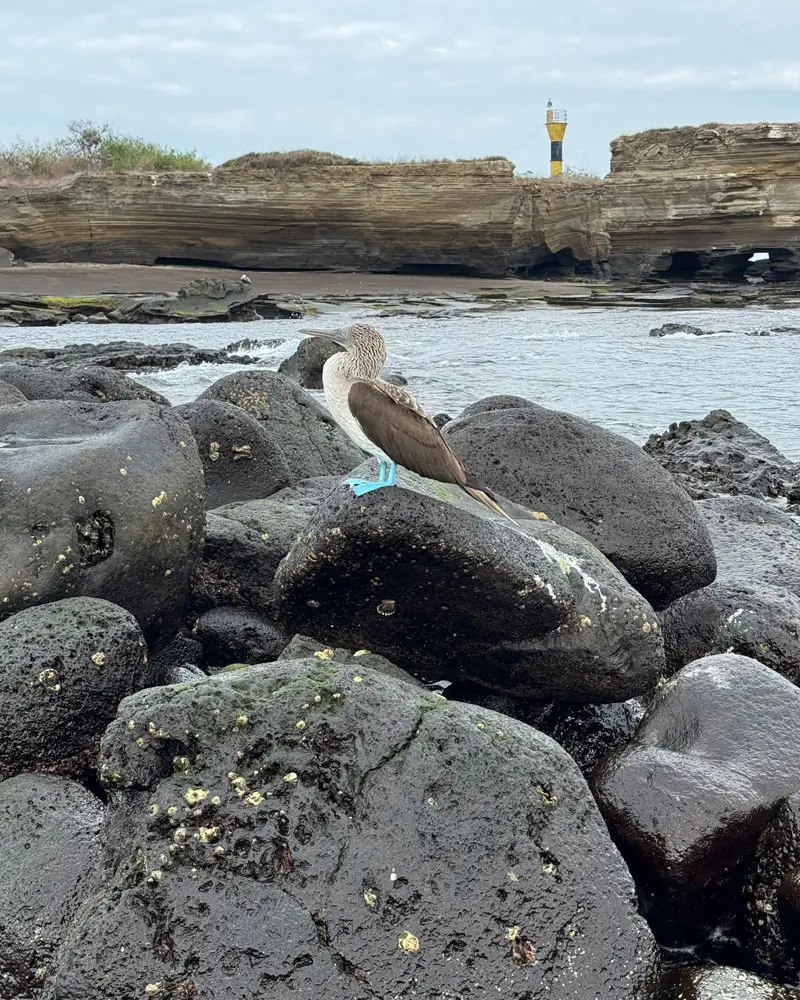
Santa Cruz Island
The stop on Santa Cruz offered a much different landscape. There were lava rocks everywhere and a desert-like landscape. During this stop, we saw some gigantic land iguanas and the holes they dug in the ground as their shelter or home. Before getting back aboard the boat, we saw a couple of marine iguanas that were sunbathing, and they allowed us to get some great photos of them. The snorkeling around Santa Cruz was not great as the weather was cloudier and the water rougher than expected. We were still able to see a variety of fish, a black-tip reef shark and some more blue-footed boobies.
Santa Fe Island
This island was far and away everyone’s favorite stop, and there were sea lions everywhere! As we boated to shore, Sea Lions were just waking up and getting out to the rocks to sunbathe. We could see every kind of sea lion, from the alpha male to the newborn babies. Upon landing on the shore, there were a couple dozen sea lions lying all over. This allowed for a great photo opportunity for our Kansas Alumni group. Following a short hike to see some more iguanas, a Galapagos Dove and one of the famous Darwin Finches, we returned to change into our snorkeling gear.
There is something so calming about swimming with sea lions. They are like puppies and so playful. Their favorite thing to do was swim around us and nibble on the fins we were wearing. While in the water, we all encountered a sea turtle swimming, which was a highlight for many.

South Plaza Island
In the afternoon, we visited South Plaza Island, home to hundreds of land iguanas and more sea lions. Here we learned how territorial the alpha male sea lions are and how the alpha male is only the “alpha” for three months before a new male comes in and takes over. As the alpha male, they are responsible for keeping the females and babies safe and other males away. It was exciting to learn about the dynamics of sea lions.
Overall, this trip exceeded my expectations. The photos you see simply do not do it justice. If you were to ask the other 12 Jayhawks on the trip what their favorite part was, you would get a variety of answers. Some enjoyed the tortoises, others enjoyed snorkeling with the sea lions and the sea turtle, while others found the iguanas and the various birds their favorite.

From start to finish, this trip was very well put together and did a great job of exposing you to the variety of landscapes, climates and wildlife that are found on the hundreds of islands and islets that make up the Galapagos. If you ever have the chance to visit the Galapagos, I highly recommend it. There is simply nothing better than traveling to a beautiful place such as the Galapagos Islands with a group of fellow Jayhawks!
The Flying Jayhawks “The Galapagos Islands” trip took place January 17-27, 2024. The trip was hosted by Austin Johanning, g’21, the Alumni Association’s assistant director of donor relations. Find more information about Flying Jayhawks trips, including a schedule, or sign up for travel emails, on our Flying Jayhawks webpage.


